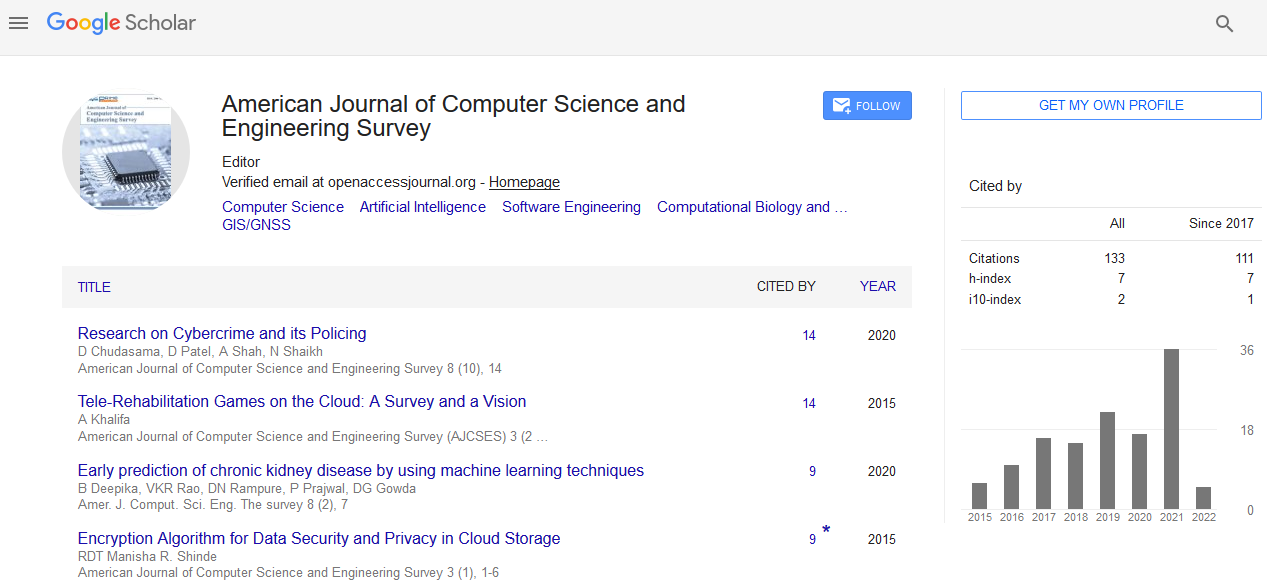Short Communication - (2022) Volume 10, Issue 3
Application of Mixed Methods in Analysing Social Contact Surveys
Emily Nixon*
Department of Biological Sciences, University of Bristol, UK
*Correspondence:
Emily Nixon, Department of Biological Sciences, University of Bristol,
UK,
Tel: 498712365,
Email:
Received: 02-May-2022, Manuscript No. IPACSES -22- 13607;
Editor assigned: 04-May-2022, Pre QC No. IPACSES -22- 13607(PQ);
Reviewed: 18-May-2022, QC No. IPACSES -22- 13607;
Revised: 23-May-2022, Manuscript No. IPACSES -22- 13607(R);
Published:
30-May-2022, DOI: 10.36846/2349-7238-10.3.15
Introduction
Social contact examples, or who you meet, are vital to understanding
and measuring airborne and close contact transmission
of irresistible infections like COVID19, flu, and measles. Social
contact designs figure out which people are most impacted
and how rapidly the infection spreads in populaces probably
going to be impacted by the mediation. Gathering exact information
about friendly contact is troublesome because of the
impermanent and questionable nature of social contact. Information
on sexual contact have been gathered and utilized
since the 1990s, yet friendly contact estimations were at first
remembered to be excessively temperamental. The principal
study showing the helpfulness of social contact information
characterized social contact as a two way discussion. This
meaning of social contact is refined in different ways, for example,
expecting something like three words, not talking, or being
inside two meters of others. Concentrates on show that age
is a significant determinant of the quantity of social contacts,
with more youthful individuals having more contacts and more
grounded age related designs.
Description
Most friendly contact reviews expect respondents to retroactively
or decidedly list all friendly associations in a single day.
The typical number of coordinated contacts detailed each day is
around 10, yet there is critical inconstancy among people, with
proof proposing that this is near on work days among the college
populace. Social contact reviews have shown that on the
off chance that respondents can report a gathering of contacts,
the quantity of contacts is altogether higher. This recommends
that it might put detailing an enormous number of contacts
separately down. Support in exploration, for example, social
contact overviews has its own predisposition. Ladies partake
more frequently than men, and lower investment rates lessen
schooling, smoking, youth, inoculation rates, and living with kids. For concentrates on that require customary or ceaseless
support, ladies are probably not going to be high cooperation
clients; furthermore, online enlistment might diminish long
haul support. Notwithstanding the bias against investment, a
few sorts of contacts are less inclined to be accounted for, for
example, B. Transient contacts and end of the week contacts.
This paper presents a blended technique investigation of the
experience of leading social contact reviews in a college setting
during the COVID 19 pandemic. This is a continuous week by
week longitudinal study laid out after June 23, 2020. Members
are asked to report the previous contacts, sorted in individual
and gathering settings retroactively. The quantitative consequences
of the review have previously been distributed [1-4].
Conclusion
Here, the plan of the blended technique is applied to inspect
the experience of understudy members who partook in CONQUEST,
help with understanding the quantitative information
gathered through the study, and impact its adequacy. Distinguish
that variables can influence your discoveries. Subjective
exploration by and large spotlights on unmistakable inquiries,
which can give a more extensive logical comprehension to supplementing
quantitative information. Quantitative information
could uncover significant data about contact with understudies
during the COVID 19 pandemic, yet it is muddled precisely
how the understudies deciphered and addressed the review
questions. Subjective information can give definite experiences.
These discoveries give a significant setting to deciphering
contact review results and evaluating the legitimacy of study
reactions, and assist with planning future contact overviews
that illuminate pandemic models.
Acknowledgement
None.
Conflict of Interest
Author states there is no conflict of interest.
REFERENCES
- Hens N, Ayele GM, Goeyvaerts N, Aerts M, Mossong J, et al. (2009) Estimating the impact of school closure on social mixing behaviour and the transmission of close contact infections in eight European countries. BMC Infectious Diseases. 9(1):187.
[Crossref][Google Scholar]
- Edmunds WJ, O’Callaghan CJ, Nokes DJ (1997) Who mixes with whom? A method to determine the contact patterns of adults that may lead to the spread of airborne infections. Proceedings of the Royal Society B: Biological Sciences. 264(1384):949–57.
[Crossref][Google Scholar]
- Hoang T, Coletti P, Melegaro A, Wallinga J (2019) A Systematic Review of Social Contact Surveys to Inform Transmission Models of Close-contact Infections. Epidemiology. 30(5):723–36.
[Crossref][Google Scholar]
- Mossong J, Hens N, Jit M, Beutels P, Auranen K, et al. (2008) Social contacts and mixing patterns relevant to the spread of infectious diseases. PLoS medicine. 5(3):e74.
[Crossref][Google Scholar]
Citation: Emily N. (2022) Application of Mixed Methods in Analying Social Contact Surveys. Am J Comp Science Eng Surv. 10:15.
Copyright: © Emily N. This is an open-access article distributed under the terms of the Creative Commons Attribution License, which permits unrestricted use, distribution, and reproduction in any medium, provided the original author and source are credited.

